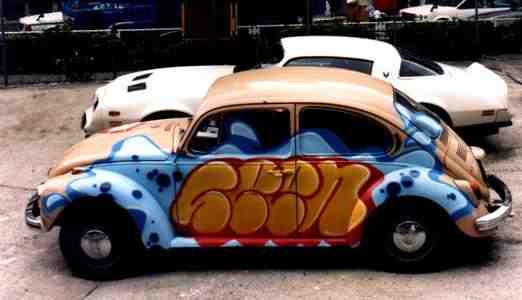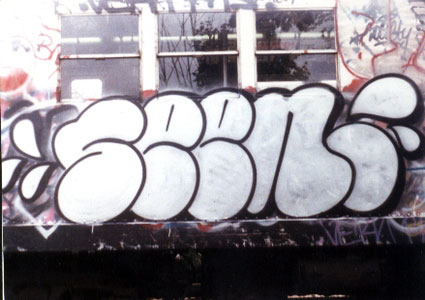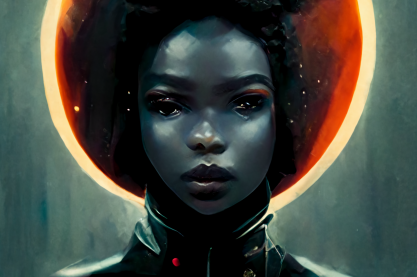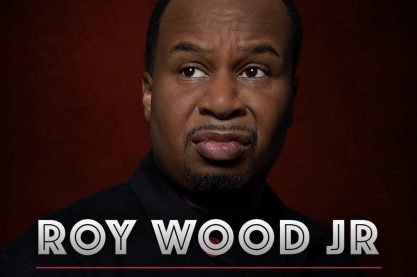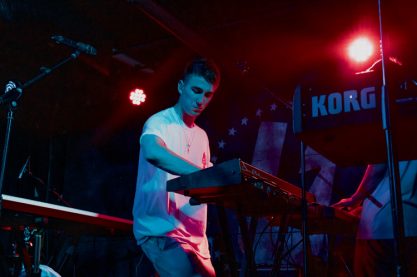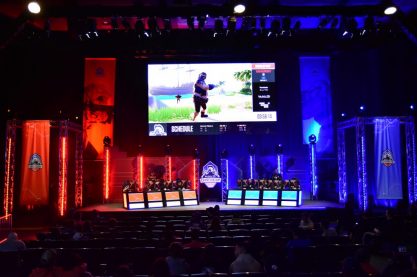Featured
FEATURE: Worldwide Graffiti - You must have SEEN it

Photo Credit: World of SEEN
Nadia Ghanem is a Parisian-born writer and photojournalist who is currently living in London. She is contributing profiles of graffiti writers in three countries--USA, Brazil, and France--and will share her stories withint the coming months on The Couch Sessions. Follow her on Twitter at @ayatghanem.
The world is being rewritten in coloured bombs, its waves the shape of spray cans. Its name is Graffiti. Massively unleashed by the gods of Art in the 60s in Philadelphia and very quickly thereafter in NYC, tinted bursts and lacquered explosions hit subways and streets, and from then on: a new iconography was born. You must have SEEN it.
New Yorker Richard Mirando known as SEEN is a graffiti artist and prolific spray-paint-writer. You will know for sure his 'Hand of Doom', probably the most famous subway car to date, a whole top to bottom graffitied car wagon with a rushing shining saber and cartoony eyed and grey hued executioner, celebrating its 30 birthday this year.
Famous or infamous depending on how you feel about graffitis, SEEN is one of the earliest and major graffistas of the movement that begun in New York's subways. Graffitying with Pjay, Duster, Sin and his brother Mad, theirs was the crew United Artists. Since 1973 SEEN has been a full blown coloured graffiti-force to be reckoned with, bubbling letters in round softies, stars, dots and crowns.

The adventurous SEEN has always been fully engaged in his art. Hollywood remembers him twice: once with friend 'Blade 1' in 1984 on a special visit there to leave their hellos in the form of tags everywhere from Venice Beach to Sunset Strip, and all over the Hollywood Star Tour buses. The second time: alone tagging the two Ls of the Hollywood sign with a massive SEEN throw up.
His graffitis from 1980 to 1990 developped from a dynamic bubble never quite fixed but always about to leap out - perhaps because it took on the moving soul of the support that bore it: wagons, cars, trailers - to an image that is itself in movement, already departing. Compare 'The boys are back' of 1980 or 'Madseen' of 1984 to 'Seen piece' of 1996 and you can sense that if you hopped on one of its letters you would travel to a graffiti world at full speed.
SEEN graffitied all supports: vehicules, walls, subway maps, street signs, and from the 80s on canvases but not exclusively, covering partial or full surfaces, notably cars such as his 1985 VW Beetle, the 'Seen Love Bug' or his tractor trailer 'Millenium' of 1999, a massive image of what looks like a clay sun-clock disintergrating.
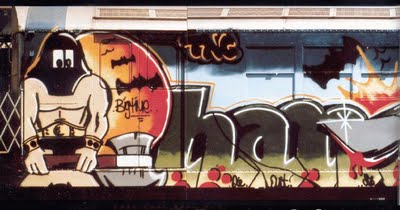
From the streets to galleries and private collections, SEEN has born his art and the spirit of Graffiti to all corners of the world, exhibiting from early on with Lee Quinones, Dondi, Jean Michel Basquiat (one of my favourite guys, going by the initials SAMO 'same old shit), Keith Haring and many others. He brought his proficiency to the world of tattoes also and opened in the Bronx one of the most reknown (and later a second) tattoo parlour in New York, still running full blast today.
A prolific figure of graffiti art, SEEN brought the tagged-word to all continents. On the 29th May an exhibition of his latest work has just opened at the Magda Danysz gallery in Paris, for a series where he has inserted steel and the logo of the MTA into the body of his work, a reminder and a cheeky wink to his early birth as a graffista in subways and to the early adventures that shaped his world and the world of graffiti at large.
Graffiti is one of the oldest expression of human kind. It dates far into human history and has often been the only remnant by which we can record the existence of ancient civilisations. Yet, the debate is still going heated as to whether graffiti is an act of art or an act of vandalism, an act of love or an act of heartless planned consumerism, whether it is a political expression, or an expression beyond boundaries, an affirming and reclaiming of one's identity. What is it for you?
For me, there is a clear correlation between the mutted voice, the open eyes and the pen: when the human spirit is oppressed and silence is forced upon it, it will find a way to speak and witness. The spray-painted word speaks and so, while the freeing articulations of Graffiti and its messengers stormed the US in the 70s, its fecund zephyr was reaching the shores of Brazil. Sao Paulo was about to be pixo-ed.
